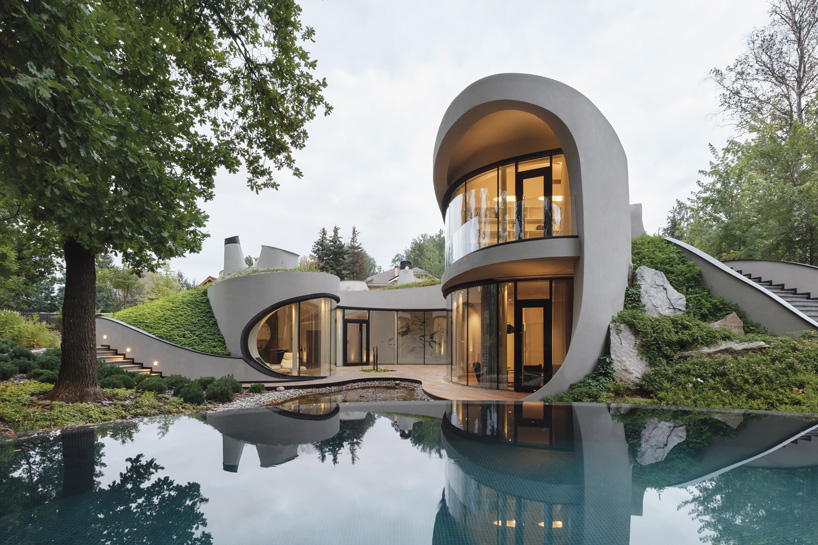Explore Prize-winning Jobs by Popular CDA Architects
Explore Prize-winning Jobs by Popular CDA Architects
Blog Article
The Crucial Duty of an Architect in Shaping Sustainable Urban Atmospheres for Future Generations
The role of an architect in crafting lasting city environments is significantly essential in reacting to the challenges of climate change and urbanization. By seamlessly integrating ecological concepts into their layouts, designers not only boost the visual and useful high quality of metropolitan spaces but also address pushing problems such as energy performance and social equity.
Recognizing Sustainable Urban Layout
Sustainable urban layout incorporates ecological principles with metropolitan planning to develop settings that are not only livable but also resilient. This approach highlights the significance of integrating natural systems right into the metropolitan material, guaranteeing that development meets the requirements of today without jeopardizing the capability of future generations to fulfill their very own requirements. Crucial element of sustainable urban style consist of efficient land use, the promotion of biodiversity, and the assimilation of environment-friendly areas, all of which add to boosted high quality of life for citizens.
In addition, lasting urban layout prioritizes the decrease of the city warm island effect, boosted air high quality, and effective stormwater monitoring. It motivates using eco-friendly resources and energy-efficient structure methods, which significantly lower carbon impacts. Additionally, sustainable city style promotes social equity by developing easily accessible public rooms and promoting mixed-use growths that deal with diverse populaces.
Through thoughtful preparation and ingenious layout strategies, lasting urban settings can improve area durability against climate modification while fostering financial development. This alternative method not just addresses prompt urban obstacles however also prepares for healthier, a lot more sustainable cities for generations to find.
Key Responsibilities of Engineers
Designers play a pivotal function in forming lasting urban settings by equating layout concepts into concrete frameworks and spaces. Their duties encompass a variety of tasks that add to the overall success of urban layout tasks.
Most importantly, architects carry out thorough site evaluations to understand the ecological, social, and cultural context of their jobs. This fundamental expertise educates their style decisions, guaranteeing that structures balance with their environments. They additionally participate in collective processes with stakeholders, consisting of city coordinators, engineers, and the community, cultivating a comprehensive approach to city advancement.
Furthermore, architects are charged with creating styles that enhance energy effectiveness, resource conservation, and capability. They must stick to local zoning legislations, constructing codes, and sustainability certifications, ensuring compliance while pushing the borders of technology.
Furthermore, engineers are accountable for handling the design process, collaborating with numerous professionals throughout the building and construction phase to guarantee that the vision is recognized precisely (cda architects). Ultimately, their duty is not only regarding looks; it is regarding creating resilient, flexible spaces that improve the top quality of life for present and future generations, laying the groundwork for lasting city living
Innovative Products and Techniques

Additionally, innovations in technology have actually resulted in the advancement of high-performance products, such as protected concrete kinds (ICFs) and photovoltaic glass, which add to power conservation and harness eco-friendly power. Methods such as easy solar style and environment-friendly roofing systems even more exhibit exactly how architecture can harmonize with natural systems, minimizing reliance on artificial home heating and important source cooling.
Furthermore, the combination of clever products, which adjust to ecological changes, supplies promising avenues for improving structure efficiency. These materials can reply to temperature fluctuations or dampness degrees, enhancing convenience and sustainability.
Ultimately, the calculated option and application of cutting-edge materials and strategies empower designers to produce city rooms that are not only functional and cosmetically pleasing however additionally durable and ecologically accountable, making sure a sustainable future for generations to come. cda architects.
Community Interaction and Partnership
The success of innovative materials and techniques in lasting metropolitan style is dramatically boosted by active neighborhood interaction and partnership. Engineers should acknowledge that the constructed setting greatly affects the lives of neighborhood citizens, making it crucial to involve them in the design process. Involving the community cultivates a sense of possession and liability, ensuring that developments not just satisfy visual and useful requirements but additionally mirror the worths and desires of those that populate them.

Successful neighborhood interaction additionally aids in focusing on social equity within metropolitan growth. By taking into consideration the voices of marginalized populaces, designers can create areas that are inclusive and equitable. By doing this, neighborhood engagement and cooperation end you can check here up being important to attaining truly sustainable city environments that offer the needs of existing and future generations.
Future Patterns in Sustainable Style
An emerging emphasis on flexible reuse and circular economy concepts is readied to redefine the landscape of lasting design. As cities come to grips with enhancing populace thickness and environmental difficulties, engineers are significantly transforming to techniques that maximize existing frameworks rather than seeking brand-new builds. link This technique not only preserves social heritage yet likewise dramatically lowers source intake and waste.
In addition, advancements in modern technology are forming future fads in lasting style. The integration of wise materials and structure systems permits for real-time energy management, enhancing performance and minimizing carbon impacts. Advancements such as environment-friendly roofings, living wall surfaces, and energy-generating facades are becoming conventional methods, additionally advertising eco-friendly equilibrium within metropolitan atmospheres.
Moreover, a shift towards biophilic design is getting traction, highlighting the connection in between nature and human health. By incorporating natural aspects, engineers produce areas that cultivate mental health while promoting biodiversity.
Conclusion
To conclude, engineers are pivotal beforehand sustainable metropolitan atmospheres with their proficiency in design, ingenious products, and community involvement. By prioritizing energy performance and source conservation, these professionals add to the creation of resistant urban spaces that satisfy the needs of existing and future generations. The assimilation of eco-friendly principles not only improves livability however additionally fosters social equity, guaranteeing growths resonate with the worths and ambitions of the neighborhoods they offer.
Report this page